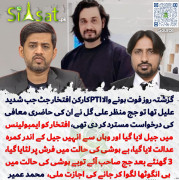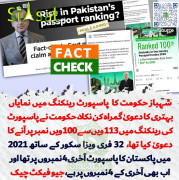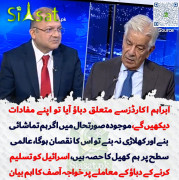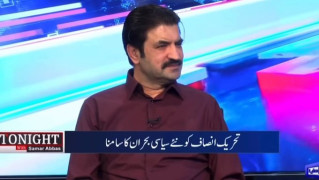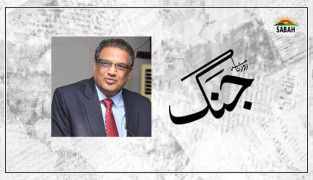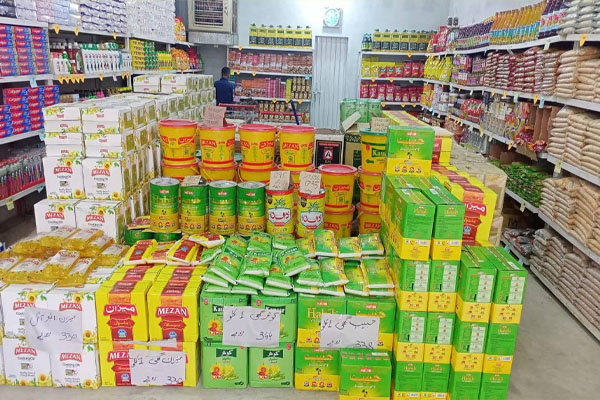Dr ali ahmad
Voter (50+ posts)
On 29 July 2015, the Afghan government announced that Omar had died in a hospital in Karachi, Pakistan in April 2013 and was "buried somewhere near the border on the Afghan side". Abdul Hassib Seddiqi, the spokesman for Afghanistan's National Directorate of Security (NDS), said: "We confirm officially that he is dead".
But initially some Taliban sources denied that he had died; other sources considered the report to be speculative, designed to destabilise peace negotiations in Pakistan between the Afghan government and the Taliban.
Later, the Taliban confirmed the death of Omar; sources close to the Taliban leadership said his deputy, Mullah Akhtar Mansour, would replace him.
Let us go through the life of this mysterious personality, who came and ruled and died, leaving behind ample mystery. He is thought to be a character of a fairy land story. Mullah Mohammed Omar Mujahid, the supreme commander and the spiritual leader of the Taliban, was Afghanistan's 11th head of state from 1996 to late 2001, under the official title "Head of the Supreme Council".
Mullah Omar was wanted by America's Department of State's Rewards for Justice program after October 2001 for sheltering Osama Bin Laden and al-Qaeda militants in the years prior to the September 11 attacks. He was believed to be directing the Taliban insurgency against the United States armed forces-led International Security Assistance Force and the government of Afghanistan.
Despite his political rank and his high status on the Rewards for Justice most wanted list, not much was publicly known about him. Only two known photos exist of him, neither of them official, and a picture used in 2002 by many media outlets has since been established to be someone other than him. The authenticity of the existing images is debated. There is a lack of images of him, because it is against original Islamic law. Apart from the fact that he had one eye, accounts of his physical appearance state that Omar was very tall at around 6 ft 6 in (1.98 m).Mullah Omar was described as shy and non-talkative with foreigners.
During his tenure as Emir of Afghanistan, Omar seldom left the city of Kandahar and rarely met with outsiders, instead relying on Foreign Minister Wakil Ahmed Muttawakil for the majority of diplomatic necessities.
It was reported on 29 July 2015, that he had died in 2013.These reports were confirmed by the Afghan intelligence agency and the Taliban the following day.
According to most sources, Omar was born sometime between 1950 and 1962 in a village in Kandahar Province, Kingdom of Afghanistan (in present-day Kandahar Province or Uruzgan Province). Some suggest his birth year as 1950 or 1953, or as late as around 1966. His exact place of birth is also uncertain; one possibility is a village called Nodeh near the city of Kandahar. Matinuddin writes that he was born in 1961 in Nodeh village, Panjwai District, Kandahar Province. Others say Omar was born in a village of the same name in Uruzgan Province. In Omar's entry in the UNSC's Taliban Sanctions List, "Nodeh village, Deh Rahwod District, Uruzgan Province" is given as a possible birthplace. Other reports say Omar was born in 1960 in Noori village near Kandahar. 'Noori village, Maiwand District, Kandahar Province' is a second location suggested in Omar's entry in the Sanctions List. According to a biography of Mullah Omar published online by the Taliban in April 2015, he was born in 1960 in the village of Chah-i-Himmat, in Khakrez District, Kandahar Province. Better established than Omar's place of birth is that his childhood home was in Deh Rahwod District, Uruzgan Province, having moved to a village there with his uncle after the death of his father. (though some identify the district as Omar's birthplace).
An ethnic Pashtun, he was born in conservative rural Afghanistan to a poor landless family of the Hotak tribe, which is part of the larger Ghilzai branch. According to Hamid Karzai, "Omar's father was a local religious leader, but the family was poor and had absolutely no political links in Kandahar or Kabul. They were essentially lower middle class Afghans and were definitely not members of the elite." His father Mawlawi Ghulam Nabi Akhund died when Omar was young. According to Omar's own words he was 3 years old when his father died, and thereafter he was raised by his uncles. One of his uncles married Omar's mother, and the family moved to a village in the poor Deh Rawod District, where the uncle was a religious teacher. It is reported that they lived in the village of Dehwanawark, close to the town of Deh Rahwod.
Omar fought as a rebel soldier with the anti-Soviet Mujahideen under the command of Nek Mohammad of the Hizb-e-Islami Khalis, but did not fight against the Najibullah regime between 1991 and 1992. It was reported that he was thin, but tall and strongly built, and "a crack marksman who had destroyed many Soviet tanks during the Afghan War."
Omar was wounded four times. Mullah Abdul Salam Zaeef claims to have been present when shrapnel destroyed one of Omar's eyes during a battle in Sangsar, Panjwaye District shortly before the 1987 Battle of Arghandab. Other sources place this event in 1986 or in the 1989 Battle of Jalalabad.
After he was disabled, Omar may have studied and taught in a madrasah, or Islamic seminary. He was reportedly a mullah at a village madrasah near the Afghan city of Kandahar.
Unlike many Afghan mujahideen, Omar spoke Arabic. He was devoted to the lectures of Sheikh Abdullah Azzam, and took a job teaching in a madrassa in Quetta, Pakistan. He later moved to a mosque in Karachi, Pakistan, where he led prayers, and later met with Osama bin Laden for the first time.
Following the Soviet withdrawal from Afghanistan in 1989 and the collapse of Najibullah's regime in 1992, the country fell into chaos as various mujahideen factions fought for control. Mullah Omar returned to Singesar and founded a madrassah. According to one legend, in 1994, he had a dream in which a woman told him: "We need your help; you must rise. You must end the chaos. Allah will help you." Mullah Omar started his movement with less than 50 armed madrassah students, known simply as the Taliban (Students). His recruits came from madrassas in Afghanistan and from the Afghan refugee camps across the border in Pakistan.
The practice of rape by warlords was one of the key factors in Mullah Omar mobilizing the Taliban. Reportedly, in early 1994, Omar led 30 men armed with 16 rifles to free two young girls who had been kidnapped and raped by a warlord, hanging him from a tank gun barrel. Another instance arose when in 1994, a few months before the Taliban took control of Kandahar, two militia commanders confronted each other over a young boy whom they both wanted to sodomize. In the ensuing fight, Omar’s group freed the boy; appeals soon flooded in for Omar to intercede in other disputes.His movement gained momentum through the year, and he quickly gathered recruits from Islamic schools. By November 1994, Mullah Omar's movement managed to capture the whole of the Kandahar Province and then captured Herat in September 1995.
A clip from a 1996 video taken secretly by BBC Newsnight which purports to show the Afghan Taliban's one-eyed leader, Mullah Mohammed Omar, presenting the cloak of Muhammad during a rally for his troops in Kandahar, before their victorious assault on Kabul.
Mullah Omar ordered the destruction of the Buddhas of Bamiyan (pictured in 1976) in March 2001, receiving international condemnation
On 4 April 1996, supporters of Mullah Omar bestowed on him the title "Amir al-Mu'minin".
In September 1996, Kabul fell to Mullah Omar and his followers. The civil war continued in the northeast corner of the country, near Tajikistan. The nation was named the Islamic Emirate of Afghanistan in October 1997 and was recognized by Pakistan, Saudi Arabia and the United Arab Emirates. Described as a "reclusive, pious and frugal" leader,Omar visited Kabul twice between 1996 to 2001. In November 2001 during a radio interview with the BBC, Omar stated: "All Taliban are moderate. According to Pakistani journalist Rahimullah Yusufzai, Mullah Omar stated in the late 1990s that "We have told Osama not to use Afghan soil to carry out political activities as it creates unnecessary confusion about Taliban objectives."
In March 2001, the Buddhas of Bamiyan were destroyed by the Taliban under an edict issued from Mullah Omar, stating: "all the statues around Afghanistan must be destroyed." This prompted an international anger against the Taliban.
In a BBC's Pashto interview after the September 11 attacks in 2001, he said, "You (the BBC) and American puppet radios have created concern. But the current situation in Afghanistan is related to a bigger cause – that is the destruction of America.... This is not a matter of weapons. We are hopeful for God's help. The real matter is the extinction of America. And, God willing, it [America] will fall to the ground...."
After the U.S.-led War in Afghanistan began in early October 2001, Omar went into hiding and was still at large. He was thought to be in the Pashtun tribal region of Afghanistan or Pakistan. The United States offered a reward of US$10 million for information leading to his capture.In November 2001, he ordered Taliban troops to abandon Kabul and take to the mountains, noting, "defending the cities with front lines that can be targeted from the air will cause us terrible loss."
Claiming that the Americans had circulated "propaganda" that Mullah Omar had gone into hiding, Foreign Minister Wakil Ahmed Muttawakil stated that he would like to "propose that prime minister Blair and president Bush take Kalashnikovs and come to a specified place where Omar will also appear to see who will run and who not." He stated that Omar was merely changing locations due to security reasons.
In the opening weeks of October 2001, Omar's house in Kandahar was bombed, killing his 10-year-old son and his uncle.
Mullah Omar continues to have the allegiance of prominent pro-Taliban military leaders in the region, including Jalaluddin Haqqani. The former foe Gulbuddin Hekmatyar's faction has also reportedly allied with Omar and the Taliban. In April 2004, Omar was interviewed via phone by Pakistani journalist Mohammad Shehzad. During the interview, Omar claimed that Osama Bin Laden was alive and well, and that his last contact with Bin Laden was months before the interview. Omar declared that the Taliban were "hunting Americans like pigs."
A captured Taliban spokesman, Muhammad Hanif, told Afghan authorities in January 2007, that Omar was being protected by the Inter-Services Intelligence (ISI) in Quetta, Pakistan.
Numerous statements have been released identified as coming from Omar. In June 2006, a statement regarding the death of Abu Musab al-Zarqawi in Iraq was released hailing al-Zarqawi as a martyr and claimed that the resistance movements in Afghanistan and Iraq "will not be weakened". Then in December 2006 Omar reportedly issued a statement expressing confidence that foreign forces will be driven out of Afghanistan.
In January 2007, it was reported that Omar made his "first exchange with a journalist since going into hiding" in 2001 with Muhammad Hanif via email and courier. In it he promised "more Afghan War", and said the over one hundred suicide bomb attacks in Afghanistan in the last year had been carried out by bombers acting on religious orders from the Taliban – "the mujahedeen do not take any action without a fatwa." In April 2007, Omar issued another statement through an intermediary encouraging more suicide attacks.
In November 2009, The Washington Times claimed that Omar, assisted by Pakistan's Inter-Services Intelligence (ISI) agency, had moved to Karachi in October.In January 2010, Brigadier Amir Sultan Tarar, a retired officer with ISI who previously trained Omar, said that he was ready to break with his al-Qaida allies in order to make peace in Afghanistan: "The moment he gets control the first target will be the al-Qaida people."
In January 2011, The Washington Post, citing a report from the Eclipse Group, a privately operated intelligence network, said that Omar had suffered a heart attack on 7 January 2011. According to the report, Pakistan's Inter-Services Intelligence agency rushed Omar to a hospital near Karachi where he was operated on, treated, and then released several days later. Pakistan's ambassador to the U.S., Husain Haqqani, stated that the report "had no basis whatsoever".
On 23 May 2011, TOLO News in Afghanistan quoted unnamed sources saying Omar had been killed by ISI two days earlier. These reports remain unconfirmed. A spokesman for the militant group said shortly after the news came out. "Reports regarding the killing of Amir-ul-Moemineen (Omar) are false. He is safe and sound and is not in Pakistan but Afghanistan." On 20 July 2011, phone text messages from accounts used by Taliban spokesmen Zabihullah Mujahid and Qari Mohammad Yousuf announced Omar's death. Mujahid and Yousuf, however, quickly denied sending the messages, asserted that their mobile phones, websites, and e-mail accounts had been hacked, and they swore revenge on the telephone network providers.
In 2012, it was revealed that an individual claiming to be Omar sent a letter to President Barack Obama in 2011, expressing slight interest in peace talks.
On 31 May 2014, in return for American prisoner of war Sergeant Bowe Bergdahl, five senior Afghan detainees were released from the Guantanamo Bay detention camp in Cuba. Omar reportedly hailed their release.
On 23 September 2014, Omar's aide, Abdul Rahman Nika, was killed by Afghan special forces. According to Afghan intelligence service spokesman Abdul Nasheed Sediqi, Nika was involved in most of the Taliban's attacks in western Afghanistan, including the kidnapping on 13 August of three Indian engineers, who were later rescued.
In December 2014, acting Afghan intelligence chief Rahmatullah Nabil stated he was not sure "whether Omar is alive or dead". This came amid reports in late November, after the National Directorate of Security, Afghanistan's intelligence agency revealed fracturing within the Taliban movement, speculating that a leadership struggle had ensued and therefore that Mullah Omar had died. Later reports from Afghan intelligence in December revealed that Mullah Omar has been hiding in the Pakistani city of Karachi. An anonymous European intelligence official who confirmed this stated "There's a consensus among all three branches of the Afghan security forces that Mullah Omar is alive. Not only do they think he’s alive, they say they have a good understanding of where exactly he is in Karachi."
In April 2015, a man alleging to be Mohammed Omar issued a fatwa declaring pledges of allegiance to the Islamic State group as forbidden in Islamic law. The man described ISIS leader Abu Bakr al-Baghdadi as a "fake caliph", and said "Baghdadi just wanted to dominate what has so far been achieved by the real jihadists of Islam after three decades of jihad. A pledge of allegiance to him is 'haram'."
Mullah Omar had to present to the world mystery not only about his death but also about his birth, his childhood, his adolescence -- great mystery from cradle to grave.
.......................... .
Dr Ali Ahmad
Email : [email protected]
2 August 2015
But initially some Taliban sources denied that he had died; other sources considered the report to be speculative, designed to destabilise peace negotiations in Pakistan between the Afghan government and the Taliban.
Later, the Taliban confirmed the death of Omar; sources close to the Taliban leadership said his deputy, Mullah Akhtar Mansour, would replace him.
Let us go through the life of this mysterious personality, who came and ruled and died, leaving behind ample mystery. He is thought to be a character of a fairy land story. Mullah Mohammed Omar Mujahid, the supreme commander and the spiritual leader of the Taliban, was Afghanistan's 11th head of state from 1996 to late 2001, under the official title "Head of the Supreme Council".
Mullah Omar was wanted by America's Department of State's Rewards for Justice program after October 2001 for sheltering Osama Bin Laden and al-Qaeda militants in the years prior to the September 11 attacks. He was believed to be directing the Taliban insurgency against the United States armed forces-led International Security Assistance Force and the government of Afghanistan.
Despite his political rank and his high status on the Rewards for Justice most wanted list, not much was publicly known about him. Only two known photos exist of him, neither of them official, and a picture used in 2002 by many media outlets has since been established to be someone other than him. The authenticity of the existing images is debated. There is a lack of images of him, because it is against original Islamic law. Apart from the fact that he had one eye, accounts of his physical appearance state that Omar was very tall at around 6 ft 6 in (1.98 m).Mullah Omar was described as shy and non-talkative with foreigners.
During his tenure as Emir of Afghanistan, Omar seldom left the city of Kandahar and rarely met with outsiders, instead relying on Foreign Minister Wakil Ahmed Muttawakil for the majority of diplomatic necessities.
It was reported on 29 July 2015, that he had died in 2013.These reports were confirmed by the Afghan intelligence agency and the Taliban the following day.
According to most sources, Omar was born sometime between 1950 and 1962 in a village in Kandahar Province, Kingdom of Afghanistan (in present-day Kandahar Province or Uruzgan Province). Some suggest his birth year as 1950 or 1953, or as late as around 1966. His exact place of birth is also uncertain; one possibility is a village called Nodeh near the city of Kandahar. Matinuddin writes that he was born in 1961 in Nodeh village, Panjwai District, Kandahar Province. Others say Omar was born in a village of the same name in Uruzgan Province. In Omar's entry in the UNSC's Taliban Sanctions List, "Nodeh village, Deh Rahwod District, Uruzgan Province" is given as a possible birthplace. Other reports say Omar was born in 1960 in Noori village near Kandahar. 'Noori village, Maiwand District, Kandahar Province' is a second location suggested in Omar's entry in the Sanctions List. According to a biography of Mullah Omar published online by the Taliban in April 2015, he was born in 1960 in the village of Chah-i-Himmat, in Khakrez District, Kandahar Province. Better established than Omar's place of birth is that his childhood home was in Deh Rahwod District, Uruzgan Province, having moved to a village there with his uncle after the death of his father. (though some identify the district as Omar's birthplace).
An ethnic Pashtun, he was born in conservative rural Afghanistan to a poor landless family of the Hotak tribe, which is part of the larger Ghilzai branch. According to Hamid Karzai, "Omar's father was a local religious leader, but the family was poor and had absolutely no political links in Kandahar or Kabul. They were essentially lower middle class Afghans and were definitely not members of the elite." His father Mawlawi Ghulam Nabi Akhund died when Omar was young. According to Omar's own words he was 3 years old when his father died, and thereafter he was raised by his uncles. One of his uncles married Omar's mother, and the family moved to a village in the poor Deh Rawod District, where the uncle was a religious teacher. It is reported that they lived in the village of Dehwanawark, close to the town of Deh Rahwod.
Omar fought as a rebel soldier with the anti-Soviet Mujahideen under the command of Nek Mohammad of the Hizb-e-Islami Khalis, but did not fight against the Najibullah regime between 1991 and 1992. It was reported that he was thin, but tall and strongly built, and "a crack marksman who had destroyed many Soviet tanks during the Afghan War."
Omar was wounded four times. Mullah Abdul Salam Zaeef claims to have been present when shrapnel destroyed one of Omar's eyes during a battle in Sangsar, Panjwaye District shortly before the 1987 Battle of Arghandab. Other sources place this event in 1986 or in the 1989 Battle of Jalalabad.
After he was disabled, Omar may have studied and taught in a madrasah, or Islamic seminary. He was reportedly a mullah at a village madrasah near the Afghan city of Kandahar.
Unlike many Afghan mujahideen, Omar spoke Arabic. He was devoted to the lectures of Sheikh Abdullah Azzam, and took a job teaching in a madrassa in Quetta, Pakistan. He later moved to a mosque in Karachi, Pakistan, where he led prayers, and later met with Osama bin Laden for the first time.
Following the Soviet withdrawal from Afghanistan in 1989 and the collapse of Najibullah's regime in 1992, the country fell into chaos as various mujahideen factions fought for control. Mullah Omar returned to Singesar and founded a madrassah. According to one legend, in 1994, he had a dream in which a woman told him: "We need your help; you must rise. You must end the chaos. Allah will help you." Mullah Omar started his movement with less than 50 armed madrassah students, known simply as the Taliban (Students). His recruits came from madrassas in Afghanistan and from the Afghan refugee camps across the border in Pakistan.
The practice of rape by warlords was one of the key factors in Mullah Omar mobilizing the Taliban. Reportedly, in early 1994, Omar led 30 men armed with 16 rifles to free two young girls who had been kidnapped and raped by a warlord, hanging him from a tank gun barrel. Another instance arose when in 1994, a few months before the Taliban took control of Kandahar, two militia commanders confronted each other over a young boy whom they both wanted to sodomize. In the ensuing fight, Omar’s group freed the boy; appeals soon flooded in for Omar to intercede in other disputes.His movement gained momentum through the year, and he quickly gathered recruits from Islamic schools. By November 1994, Mullah Omar's movement managed to capture the whole of the Kandahar Province and then captured Herat in September 1995.
A clip from a 1996 video taken secretly by BBC Newsnight which purports to show the Afghan Taliban's one-eyed leader, Mullah Mohammed Omar, presenting the cloak of Muhammad during a rally for his troops in Kandahar, before their victorious assault on Kabul.
Mullah Omar ordered the destruction of the Buddhas of Bamiyan (pictured in 1976) in March 2001, receiving international condemnation
On 4 April 1996, supporters of Mullah Omar bestowed on him the title "Amir al-Mu'minin".
In September 1996, Kabul fell to Mullah Omar and his followers. The civil war continued in the northeast corner of the country, near Tajikistan. The nation was named the Islamic Emirate of Afghanistan in October 1997 and was recognized by Pakistan, Saudi Arabia and the United Arab Emirates. Described as a "reclusive, pious and frugal" leader,Omar visited Kabul twice between 1996 to 2001. In November 2001 during a radio interview with the BBC, Omar stated: "All Taliban are moderate. According to Pakistani journalist Rahimullah Yusufzai, Mullah Omar stated in the late 1990s that "We have told Osama not to use Afghan soil to carry out political activities as it creates unnecessary confusion about Taliban objectives."
In March 2001, the Buddhas of Bamiyan were destroyed by the Taliban under an edict issued from Mullah Omar, stating: "all the statues around Afghanistan must be destroyed." This prompted an international anger against the Taliban.
In a BBC's Pashto interview after the September 11 attacks in 2001, he said, "You (the BBC) and American puppet radios have created concern. But the current situation in Afghanistan is related to a bigger cause – that is the destruction of America.... This is not a matter of weapons. We are hopeful for God's help. The real matter is the extinction of America. And, God willing, it [America] will fall to the ground...."
After the U.S.-led War in Afghanistan began in early October 2001, Omar went into hiding and was still at large. He was thought to be in the Pashtun tribal region of Afghanistan or Pakistan. The United States offered a reward of US$10 million for information leading to his capture.In November 2001, he ordered Taliban troops to abandon Kabul and take to the mountains, noting, "defending the cities with front lines that can be targeted from the air will cause us terrible loss."
Claiming that the Americans had circulated "propaganda" that Mullah Omar had gone into hiding, Foreign Minister Wakil Ahmed Muttawakil stated that he would like to "propose that prime minister Blair and president Bush take Kalashnikovs and come to a specified place where Omar will also appear to see who will run and who not." He stated that Omar was merely changing locations due to security reasons.
In the opening weeks of October 2001, Omar's house in Kandahar was bombed, killing his 10-year-old son and his uncle.
Mullah Omar continues to have the allegiance of prominent pro-Taliban military leaders in the region, including Jalaluddin Haqqani. The former foe Gulbuddin Hekmatyar's faction has also reportedly allied with Omar and the Taliban. In April 2004, Omar was interviewed via phone by Pakistani journalist Mohammad Shehzad. During the interview, Omar claimed that Osama Bin Laden was alive and well, and that his last contact with Bin Laden was months before the interview. Omar declared that the Taliban were "hunting Americans like pigs."
A captured Taliban spokesman, Muhammad Hanif, told Afghan authorities in January 2007, that Omar was being protected by the Inter-Services Intelligence (ISI) in Quetta, Pakistan.
Numerous statements have been released identified as coming from Omar. In June 2006, a statement regarding the death of Abu Musab al-Zarqawi in Iraq was released hailing al-Zarqawi as a martyr and claimed that the resistance movements in Afghanistan and Iraq "will not be weakened". Then in December 2006 Omar reportedly issued a statement expressing confidence that foreign forces will be driven out of Afghanistan.
In January 2007, it was reported that Omar made his "first exchange with a journalist since going into hiding" in 2001 with Muhammad Hanif via email and courier. In it he promised "more Afghan War", and said the over one hundred suicide bomb attacks in Afghanistan in the last year had been carried out by bombers acting on religious orders from the Taliban – "the mujahedeen do not take any action without a fatwa." In April 2007, Omar issued another statement through an intermediary encouraging more suicide attacks.
In November 2009, The Washington Times claimed that Omar, assisted by Pakistan's Inter-Services Intelligence (ISI) agency, had moved to Karachi in October.In January 2010, Brigadier Amir Sultan Tarar, a retired officer with ISI who previously trained Omar, said that he was ready to break with his al-Qaida allies in order to make peace in Afghanistan: "The moment he gets control the first target will be the al-Qaida people."
In January 2011, The Washington Post, citing a report from the Eclipse Group, a privately operated intelligence network, said that Omar had suffered a heart attack on 7 January 2011. According to the report, Pakistan's Inter-Services Intelligence agency rushed Omar to a hospital near Karachi where he was operated on, treated, and then released several days later. Pakistan's ambassador to the U.S., Husain Haqqani, stated that the report "had no basis whatsoever".
On 23 May 2011, TOLO News in Afghanistan quoted unnamed sources saying Omar had been killed by ISI two days earlier. These reports remain unconfirmed. A spokesman for the militant group said shortly after the news came out. "Reports regarding the killing of Amir-ul-Moemineen (Omar) are false. He is safe and sound and is not in Pakistan but Afghanistan." On 20 July 2011, phone text messages from accounts used by Taliban spokesmen Zabihullah Mujahid and Qari Mohammad Yousuf announced Omar's death. Mujahid and Yousuf, however, quickly denied sending the messages, asserted that their mobile phones, websites, and e-mail accounts had been hacked, and they swore revenge on the telephone network providers.
In 2012, it was revealed that an individual claiming to be Omar sent a letter to President Barack Obama in 2011, expressing slight interest in peace talks.
On 31 May 2014, in return for American prisoner of war Sergeant Bowe Bergdahl, five senior Afghan detainees were released from the Guantanamo Bay detention camp in Cuba. Omar reportedly hailed their release.
On 23 September 2014, Omar's aide, Abdul Rahman Nika, was killed by Afghan special forces. According to Afghan intelligence service spokesman Abdul Nasheed Sediqi, Nika was involved in most of the Taliban's attacks in western Afghanistan, including the kidnapping on 13 August of three Indian engineers, who were later rescued.
In December 2014, acting Afghan intelligence chief Rahmatullah Nabil stated he was not sure "whether Omar is alive or dead". This came amid reports in late November, after the National Directorate of Security, Afghanistan's intelligence agency revealed fracturing within the Taliban movement, speculating that a leadership struggle had ensued and therefore that Mullah Omar had died. Later reports from Afghan intelligence in December revealed that Mullah Omar has been hiding in the Pakistani city of Karachi. An anonymous European intelligence official who confirmed this stated "There's a consensus among all three branches of the Afghan security forces that Mullah Omar is alive. Not only do they think he’s alive, they say they have a good understanding of where exactly he is in Karachi."
In April 2015, a man alleging to be Mohammed Omar issued a fatwa declaring pledges of allegiance to the Islamic State group as forbidden in Islamic law. The man described ISIS leader Abu Bakr al-Baghdadi as a "fake caliph", and said "Baghdadi just wanted to dominate what has so far been achieved by the real jihadists of Islam after three decades of jihad. A pledge of allegiance to him is 'haram'."
Mullah Omar had to present to the world mystery not only about his death but also about his birth, his childhood, his adolescence -- great mystery from cradle to grave.
.......................... .
Dr Ali Ahmad
Email : [email protected]
2 August 2015
Last edited by a moderator:

